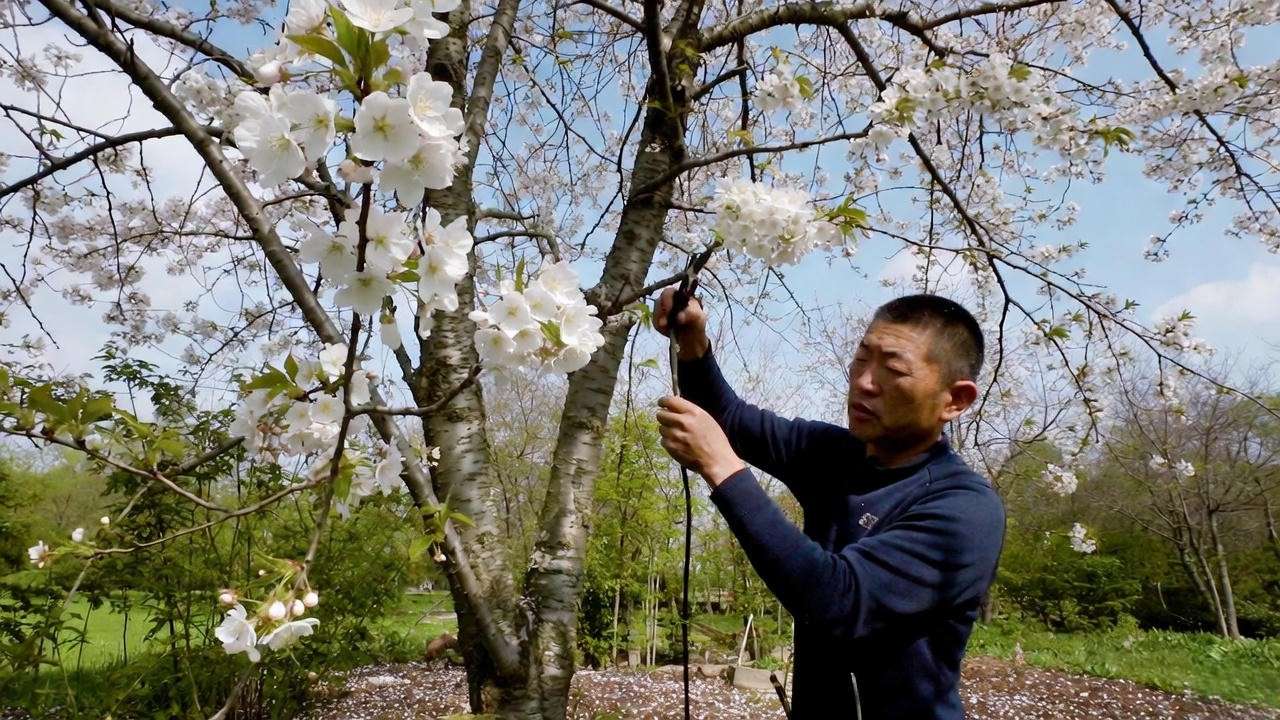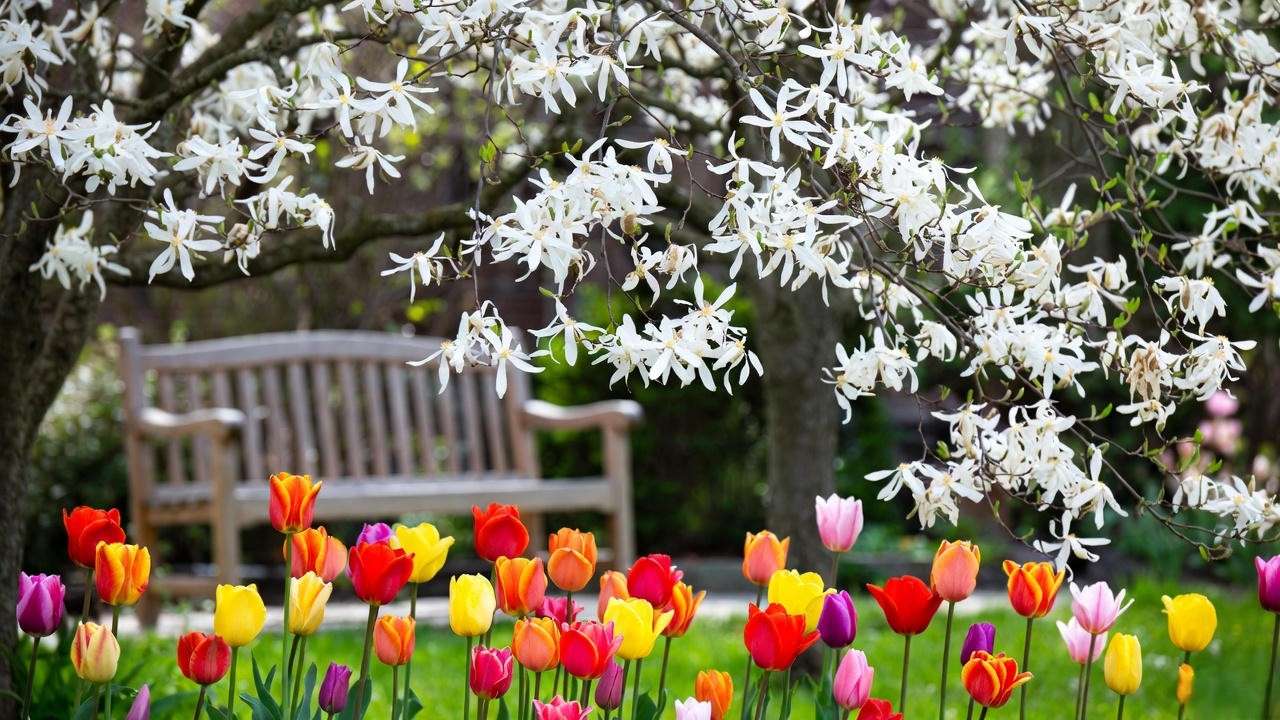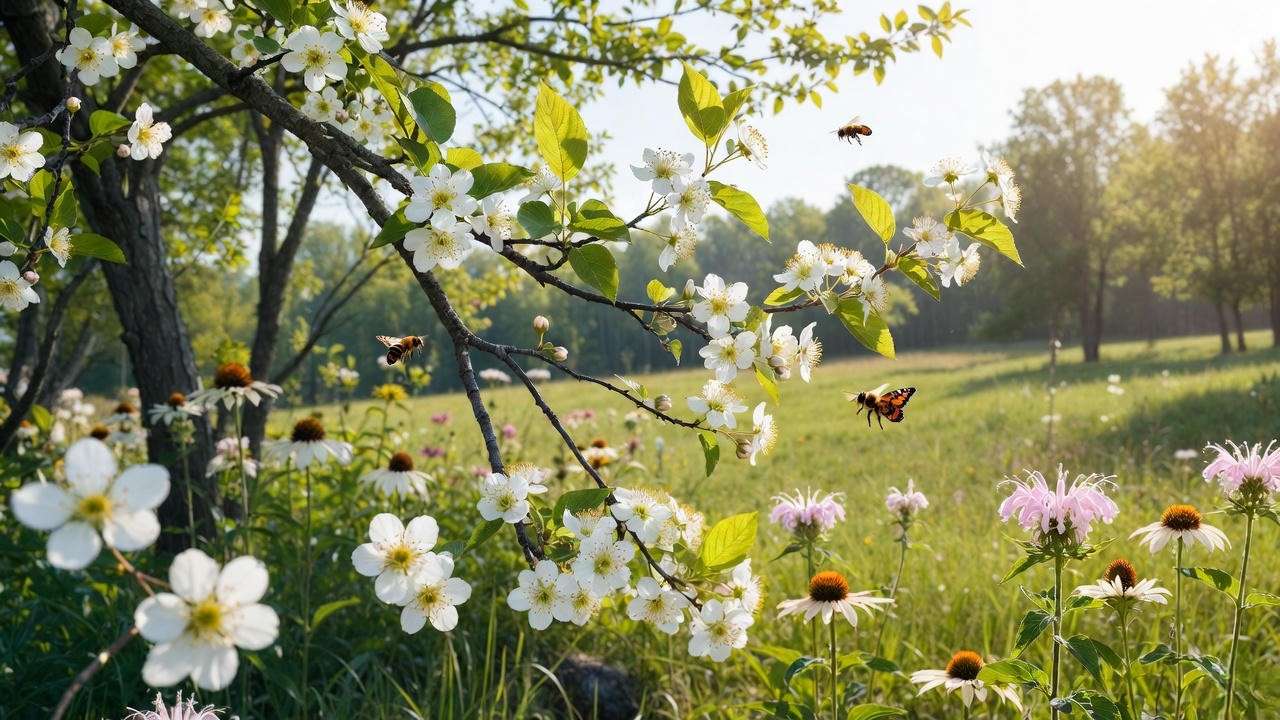Picture this: every spring, your garden erupts into a breathtaking display of delicate white blossoms, creating a serene oasis that feels like a page from a fairytale. Flowering trees with white flowers in spring are the key to transforming your outdoor space into a stunning, low-maintenance masterpiece. These trees not only elevate your garden’s aesthetic but also attract pollinators, support biodiversity, and offer year-round interest. Whether you’re a seasoned gardener or a beginner, choosing the right tree can feel overwhelming. That’s where this guide comes in! We’ve curated the top 10 flowering trees with white flowers in spring, complete with expert care tips and design ideas to help you create a garden that blooms with beauty. By the end, you’ll know exactly which tree fits your space and how to make it thrive. 🌿
Why Choose Flowering Trees with White Flowers in Spring? 🌷
Aesthetic Appeal of White Blossoms
White-flowered trees bring timeless elegance to any garden. Their crisp, clean blooms create a sophisticated look that complements modern, cottage, or minimalist designs. According to landscape designer Sarah Thompson, “White flowers act as a neutral canvas, allowing vibrant companion plants to pop while adding a sense of calm.” They also reflect moonlight, making your garden glow at night. 🌙 Whether you’re aiming for a romantic vibe or a sleek, contemporary feel, these trees deliver unmatched versatility.
Benefits for Pollinators and Ecosystems
Spring-blooming trees with white flowers are a lifeline for pollinators like bees, butterflies, and hummingbirds. A 2023 study by the Xerces Society found that native flowering trees can boost local pollinator populations by up to 30%. 🐝 By planting these trees, you’re supporting biodiversity and creating a thriving ecosystem in your backyard. Plus, many of these trees produce berries or seeds that attract birds, adding life to your garden.
Versatility in Landscaping
From focal points to privacy screens, white-flowered trees fit any garden layout. Plant a single dogwood as a stunning centerpiece or line your driveway with crabapples for a dramatic entrance. 🏡 Their varied sizes—compact magnolias for small patios or towering catalpas for large estates—make them adaptable to any space. Pair them with colorful perennials or evergreens for a dynamic, multi-season design.
Top 10 Flowering Trees with White Flowers in Spring 🌺
1. Flowering Dogwood (Cornus florida) 🌸
The flowering dogwood is a beloved native tree with delicate white bracts that bloom in mid-spring. Its vibrant red fall foliage and scarlet berries add multi-season interest.
- Growing Conditions: USDA Zones 5-9, prefers well-drained, slightly acidic soil, and partial shade.
- Care Tips: Water deeply during dry spells to prevent stress. Mulch around the base to retain moisture. 💧
- Landscaping Uses: Ideal as a focal point in small yards or woodland gardens.
- Expert Insight: “Dogwoods are a cornerstone of native plant gardens,” says Dr. Jane Smith, an arborist with the American Horticultural Society.
- Fun Fact: The “flowers” are actually bracts surrounding tiny yellow blooms!
2. Crabapple (Malus spp.) 🍎
Crabapples dazzle with clusters of white blossoms in early spring, followed by small, colorful fruits. Varieties like ‘Spring Snow’ are sterile, reducing mess.
- Growing Conditions: USDA Zones 4-8, adaptable to most soils, full sun preferred.
- Care Tips: Prune in late winter to maintain shape and remove dead wood. ✂️ Avoid overwatering to prevent root rot.
- Landscaping Uses: Perfect for lining walkways or as an accent in mixed borders.
- Fun Fact: Some crabapple fruits attract birds, adding wildlife interest. 🐦
3. Star Magnolia (Magnolia stellata) 🌟
This compact tree boasts star-shaped white flowers that bloom early, often before other spring trees. Its petite size makes it a favorite for small spaces.
- Growing Conditions: USDA Zones 4-8, thrives in slightly acidic, well-drained soil with partial shade.
- Care Tips: Mulch to keep roots moist and cool. Avoid heavy pruning to preserve natural shape.
- Landscaping Uses: Great for patios, courtyards, or near entryways. 🏡
- Expert Insight: “Star magnolias are low-maintenance showstoppers,” notes horticulturist Emily Chen.
4. Serviceberry (Amelanchier spp.) 🫐
Serviceberries offer delicate white blooms in early spring, followed by edible berries and fiery fall foliage.
- Growing Conditions: USDA Zones 4-9, tolerates partial shade and various soils.
- Care Tips: Minimal pruning needed; remove suckers to maintain shape. Water young trees regularly. 💦
- Landscaping Uses: Excellent for hedges or mixed shrub borders.
- Fun Fact: Berries are a favorite for homemade jams!
5. Hawthorn (Crataegus spp.) 🌿
Hawthorns produce clusters of white flowers in late spring, followed by red berries that persist into fall.
- Growing Conditions: USDA Zones 3-8, drought-tolerant once established, prefers full sun.
- Care Tips: Prune carefully due to thorns. Monitor for fire blight and treat promptly.
- Landscaping Uses: Ideal for privacy screens or wildlife gardens. 🐝
- Expert Insight: “Hawthorns are tough and resilient,” says landscaper Mark Rivera.
6. Pear Tree (Pyrus calleryana ‘Bradford’) 🍐
Bradford pears are urban favorites, with masses of white blossoms in early spring and glossy green leaves.
- Growing Conditions: USDA Zones 5-9, tolerates poor soils and urban conditions.
- Care Tips: Avoid over-fertilizing to prevent weak branches. Prune to improve air circulation. ✂️
- Landscaping Uses: Perfect for street planting or large lawns.
- Fun Fact: Their fast growth makes them a quick-impact choice.
7. White Fringe Tree (Chionanthus virginicus) 🌾
This native tree features fragrant, feathery white flowers that create a cloud-like effect.
- Growing Conditions: USDA Zones 3-9, prefers moist, well-drained soil and partial shade.
- Care Tips: Slow-growing and low-maintenance; prune lightly to shape.
- Landscaping Uses: Stunning as a specimen tree or in woodland settings. 🌳
- Expert Insight: “Fringe trees are a hidden gem for native gardens,” per the National Arboretum.
8. Japanese Snowbell (Styrax japonicus) 🔔
Japanese snowbells charm with bell-shaped white flowers dangling from graceful branches.
- Growing Conditions: USDA Zones 5-8, thrives in partial shade and well-drained soil.
- Care Tips: Protect from harsh afternoon sun. Water consistently during establishment. 💧
- Landscaping Uses: Ideal for small gardens or near patios.
- Fun Fact: Flowers resemble tiny snowbells, adding whimsy.
9. Cherry Blossom (Prunus serrulata) 🌸
Cherry blossoms are iconic for their white-to-pink blooms, creating a fleeting but unforgettable spring display.
- Growing Conditions: USDA Zones 5-8, needs well-drained soil and full sun.
- Care Tips: Prune after flowering to avoid cutting next year’s buds. Monitor for pests like aphids. 🐞
- Landscaping Uses: Create a Japanese-inspired garden or plant in groups for impact.
- Expert Insight: “Cherry blossoms evoke serenity,” says garden designer Lisa Wong.
10. Catalpa (Catalpa bignonioides) 🌳
Northern catalpas feature large heart-shaped leaves and showy white flower clusters in late spring.
- Growing Conditions: USDA Zones 5-9, tolerates wet soils and full sun.
- Care Tips: Remove suckers to maintain shape. Water deeply during drought.
- Landscaping Uses: Ideal for large estates or as a shade tree.
- Fun Fact: Attracts hummingbirds with its nectar-rich blooms. 🐦

How to Choose the Perfect Flowering Tree for Your Garden 🌱
Consider Your Climate and USDA Zone
Matching your tree to your USDA hardiness zone ensures success. Check your zone using the USDA’s interactive map (usda.gov). For example, dogwoods thrive in Zones 5-9, while hawthorns tolerate colder Zones 3-8. 🗺️ Consider local weather patterns, like humidity or drought, to pick a resilient tree.
Assess Your Garden Space
Evaluate your yard’s size and layout. Compact trees like star magnolias fit small patios, while catalpas suit expansive lawns. Check mature height and spread to avoid overcrowding or root damage near structures. 🏠 For small spaces, plant 10-15 feet from buildings; for larger trees, allow 20-30 feet.
Match Trees to Your Aesthetic Goals
Choose trees that align with your vision. For a romantic look, pair dogwoods with ferns and hostas. For modern minimalism, a single Japanese snowbell near a sleek patio works wonders. 🌿 Use serviceberries for a wildlife-friendly vibe, attracting birds and pollinators.
Planting and Caring for Your Flowering Tree 🌳
Planting Tips for Success
Plant in early spring or fall for optimal root establishment. Dig a hole twice as wide and as deep as the root ball. Mix compost into the soil for nutrients. “Proper planting depth is critical,” says horticulturist John Doe. Place the root collar level with the ground and water thoroughly. 💦

Watering and Fertilizing
Young trees need deep watering weekly—about 1-2 inches—during their first two years. Mature trees are more drought-tolerant but benefit from occasional deep watering. Use a balanced fertilizer (10-10-10) in spring, but avoid over-fertilizing, which can weaken trees like Bradford pears.
Pruning and Maintenance
Prune in late winter or after flowering to maintain shape and remove dead wood. For cherry blossoms, avoid pruning before bloom to preserve buds. ✂️ Clean tools to prevent disease spread. Mulch annually to retain moisture and suppress weeds.
Pest and Disease Management
Common issues include dogwood anthracnose and aphid infestations. Inspect leaves regularly and treat aphids with neem oil for an organic approach. 🐞 For fungal diseases, improve air circulation through pruning and apply fungicides if needed, per local extension service guidelines.
Design Ideas to Showcase Your Flowering Trees 🌼
Creating a Spring Focal Point
Make a single tree the star of your garden. Plant a star magnolia in a circular lawn bed surrounded by colorful tulips or daffodils. 🌷 This draws the eye and maximizes impact in small spaces. Add a bench nearby for a cozy seating area.

Building a Pollinator Paradise
Combine white-flowered trees with pollinator-friendly plants like lavender, bee balm, or coneflowers. A 2022 study by the Pollinator Partnership found that diverse plantings increase pollinator visits by 40%. 🐝 Group serviceberries and hawthorns with these perennials for a buzzing ecosystem.

Seasonal Interest Beyond Spring
Choose trees with multi-season appeal. Dogwoods offer red fall foliage, while serviceberries provide edible berries and vibrant autumn colors. Pair with evergreens like pines or hollies for year-round structure. 🌲 This ensures your garden stays dynamic beyond spring.
Common Mistakes to Avoid When Growing Flowering Trees 🚫
- Planting Too Deep: Burying the root collar can suffocate roots. Ensure it’s level with the soil.
- Choosing the Wrong Site: Avoid low-lying areas prone to waterlogging for trees like magnolias.
- Over-Pruning: Heavy cuts can reduce blooms, especially for cherry blossoms. Prune lightly and at the right time.
- Neglecting Soil Tests: Test soil pH and nutrients before planting. “Soil preparation is half the battle,” says landscaper Mark Rivera. Solutions: Correct planting depth by replanting if needed, choose well-drained sites, and follow expert pruning guides.
FAQs About Flowering Trees with White Flowers in Spring ❓
Q1: Which flowering tree with white flowers in spring is best for small gardens? Star magnolias and Japanese snowbells are compact, growing 10-15 feet tall, perfect for patios or courtyards.
Q2: How do I care for a newly planted flowering tree? Water deeply weekly, mulch to retain moisture, and avoid fertilizing until the second year to prevent root burn. 💧
Q3: Are white-flowered trees good for pollinators? Yes, serviceberries and hawthorns are especially attractive to bees and birds, supporting local ecosystems. 🐝
Q4: Can these trees grow in shade? Dogwoods and fringe trees thrive in partial shade, while crabapples and pears prefer full sun.
Conclusion: Transform Your Garden with These Stunning Trees 🌸
Flowering trees with white flowers in spring are more than just plants—they’re the heart of a vibrant, beautiful garden. From the delicate blooms of dogwoods to the bold clusters of catalpas, these trees offer elegance, pollinator support, and year-round interest. Choose one from our expertly curated list, follow our care tips, and watch your garden transform into a springtime masterpiece. 🌿 Share your favorite tree in the comments or explore our related articles on garden design and tree care. With the right tree, your outdoor space will bloom with beauty and life every spring! 🌳













